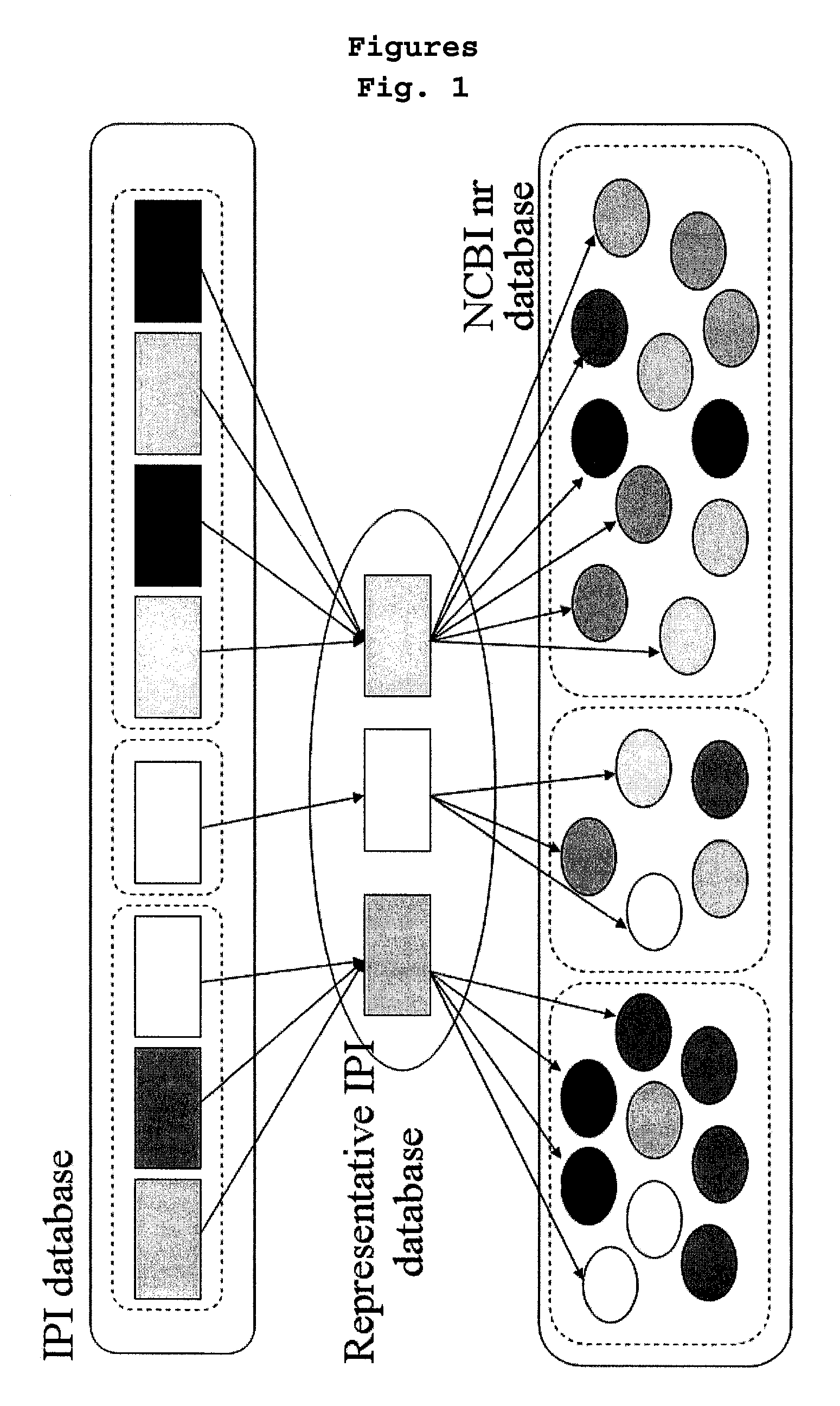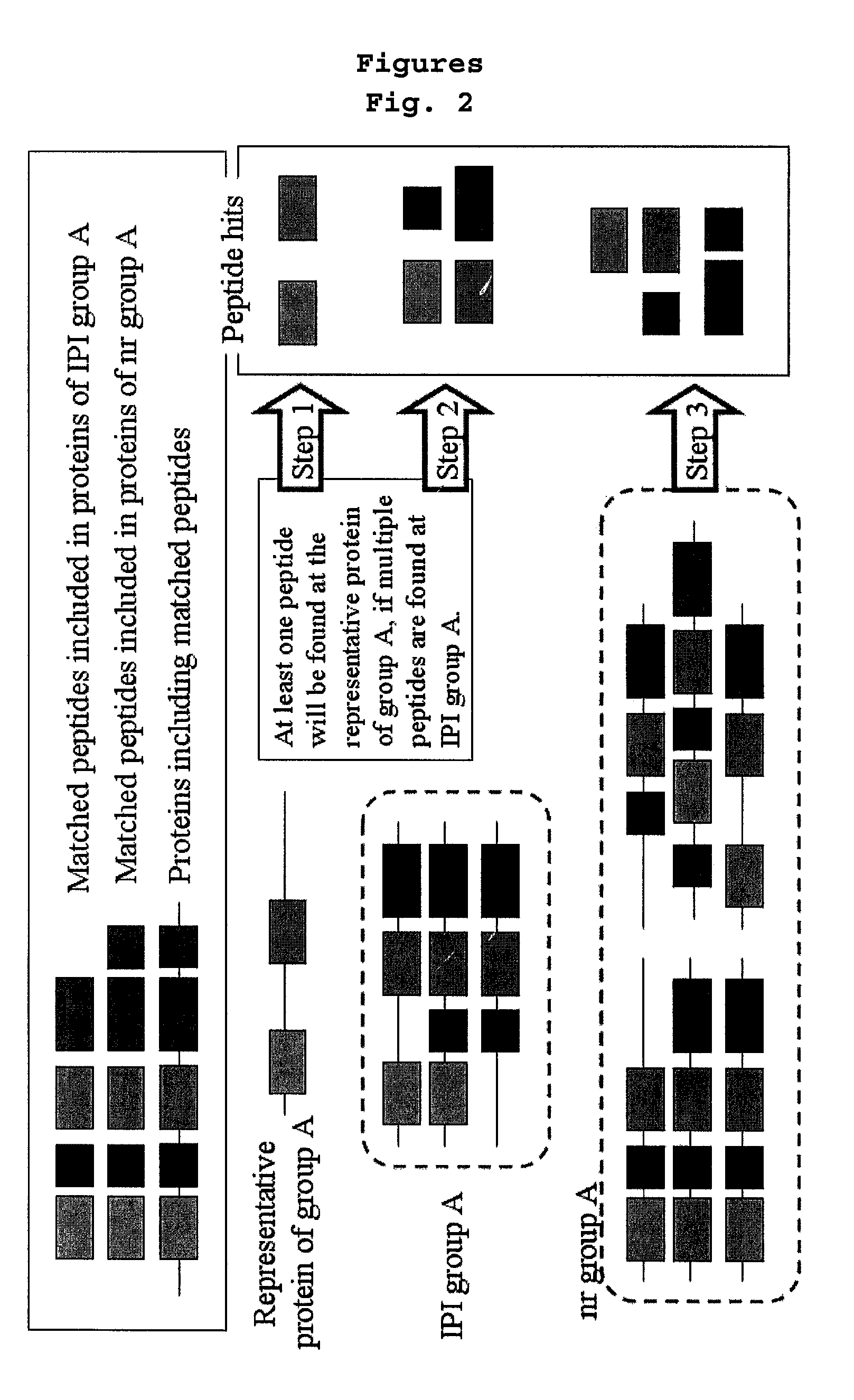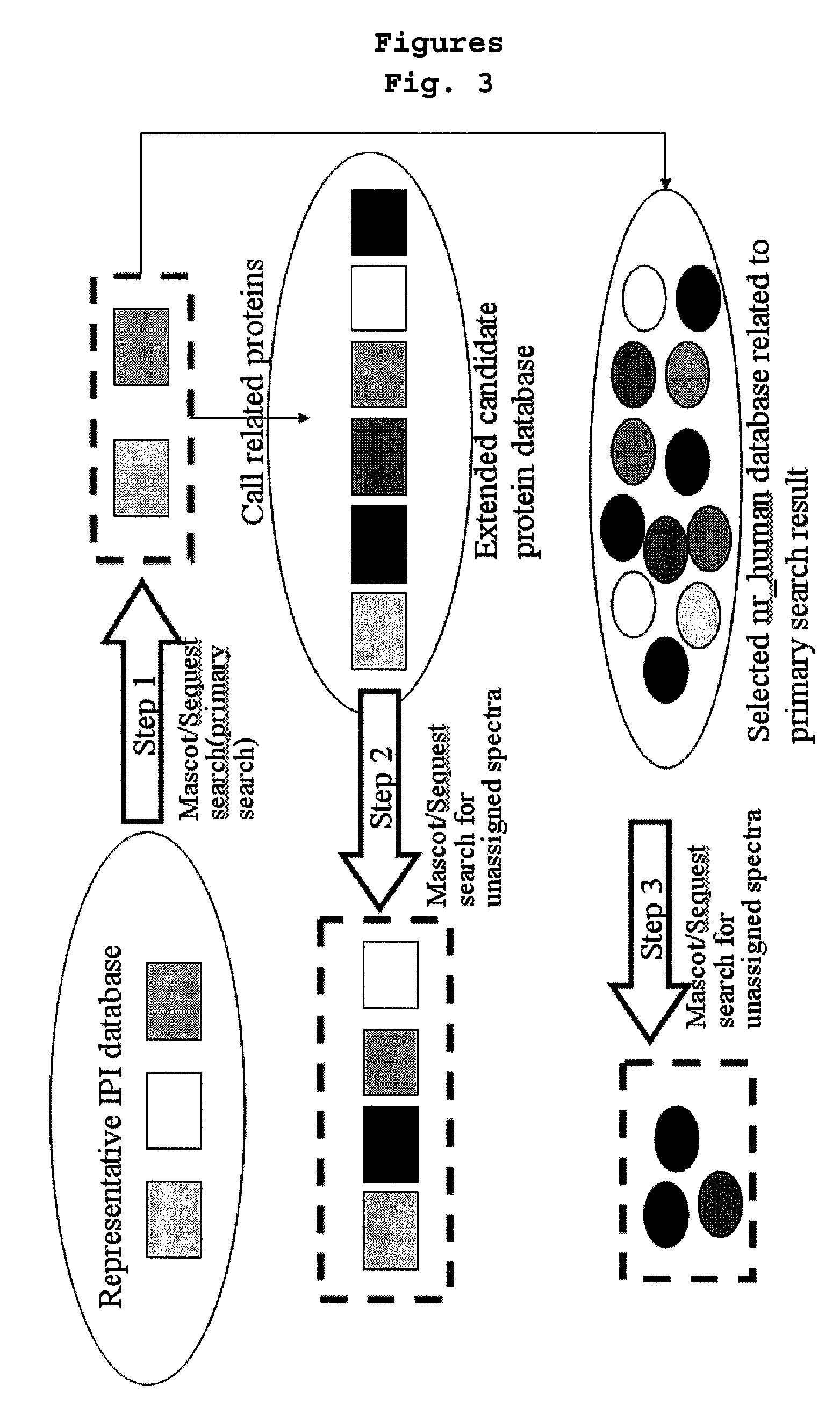Method for reconstructing protein database and a method for screening proteins by using the same method
a protein database and protein technology, applied in the field of protein database reconstruction for protein identification, can solve the problems of inability to confirm some similar protein sequences, inability to use practically, and reduced search efficiency, and achieve the effect of shortening the screening tim
- Summary
- Abstract
- Description
- Claims
- Application Information
AI Technical Summary
Benefits of technology
Problems solved by technology
Method used
Image
Examples
example 2
Results from the Conventional Protein Screening Algorithm
[0086]The tandem mass spectrum obtained in the above Example 1 was screened with the software for protein identification (TurboSEQUESTTM of Bioworks 3.1, Thermo Electron Corp., USA) by using the human protein database IPI_Human protein sequence database version 3.15.1 (ftpebiacuk / pub / databases / IPI / current / ) selected from IPI databases downloaded from EBI, England. As a result, 2,944 proteins were identified. For reference, the IPI_Human protein sequence database version 3.15.1 is composed of 58,099 protein sequences. To identify a protein, the peptides having Xcorr value of at least 1.9 with the charge of +1, 2.2 with the charge of +2 and 3.75 with the charge of +3 are selected. The ΔCn value is preferably more than 0.1 and the RSp value is lower than 4, which are the standards used for TurboSEQUESTTM.
example 3
Construction of Hierarchical Database and Identification of a Protein Using the same
[0087]
[0088]58,099 protein sequences of IPI_Human protein sequence database were grouped by at least 60% homology by using a database clustering software (CD-HIT, bioinformaticsorg, Li, W. et al., Bioinformatics 17:282-283, 2001; Li, W. et al, Bioinformatics 18:77-82, 2002). A representative protein was appointed in each group and those selected representative proteins were grouped into one, leading to the construction of the representative protein database. The numbers of the proteins in the representative protein database was 24,120.
[0089]
[0090]The software for protein identification (TurboSEQUEST™) used in Example 2 was run with the representative protein database. As a result, 2,136 proteins were identified based on the mass spectrum data in Example 2. The above result indicates that the representative proteins alone can identify 73% of total target proteins.
[0091]
[0092]6,860 proteins which were ...
PUM
 Login to View More
Login to View More Abstract
Description
Claims
Application Information
 Login to View More
Login to View More - R&D
- Intellectual Property
- Life Sciences
- Materials
- Tech Scout
- Unparalleled Data Quality
- Higher Quality Content
- 60% Fewer Hallucinations
Browse by: Latest US Patents, China's latest patents, Technical Efficacy Thesaurus, Application Domain, Technology Topic, Popular Technical Reports.
© 2025 PatSnap. All rights reserved.Legal|Privacy policy|Modern Slavery Act Transparency Statement|Sitemap|About US| Contact US: help@patsnap.com



